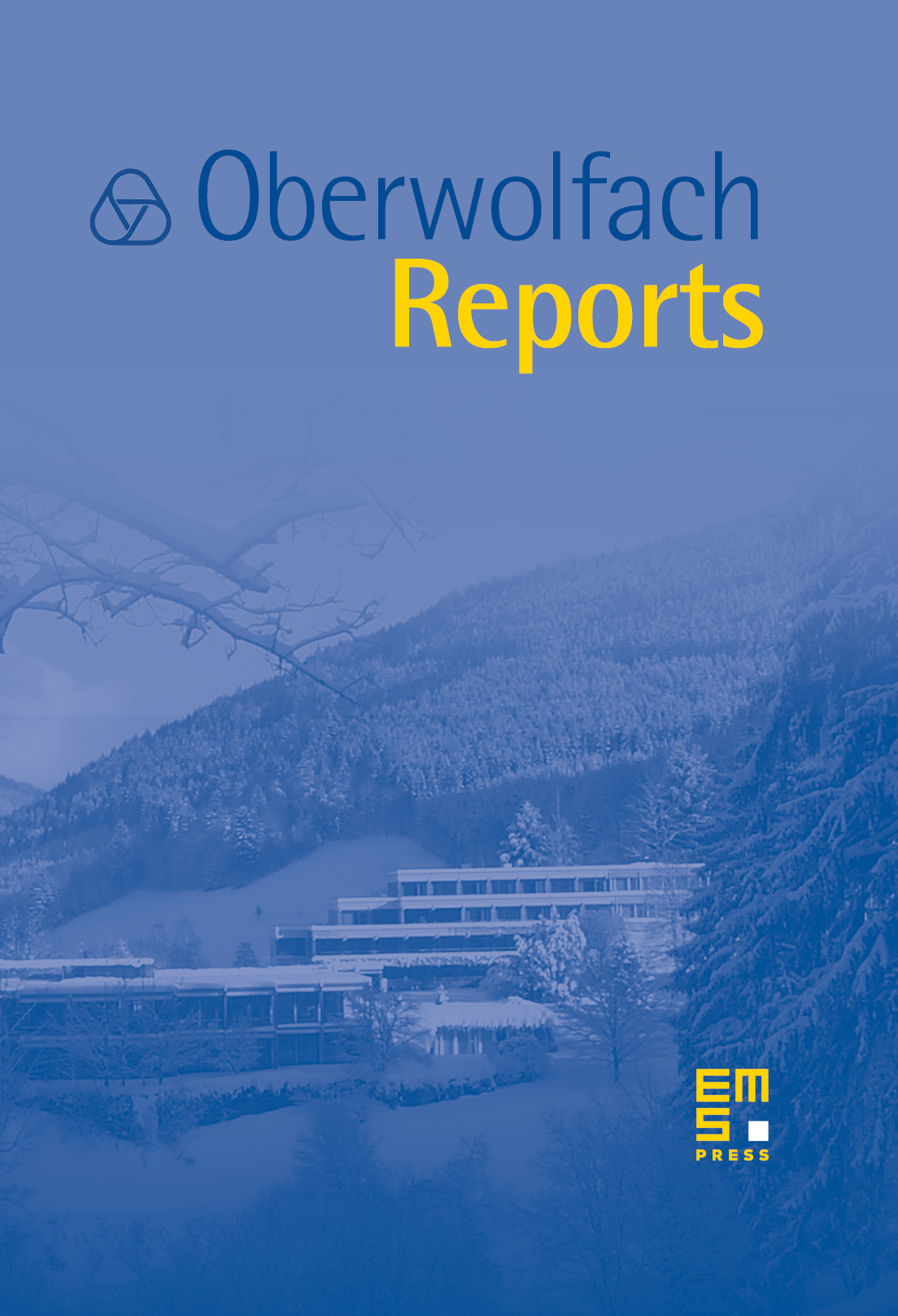Four-dimensional Manifolds
Denis Auroux
Massachusetts Institute of Technology, Cambridge, USARonald J. Stern
University of California, Irvine, United StatesPeter Teichner
University of California, Berkeley, USA

Abstract
There are many active areas in the theory of topological, smooth, and symplectic 4-manifolds, and the flurry of recent activity has led to many spectacular advances. Each flavor of 4-manifold topology has its own distinctive features, as first evidenced in the early 1980s by Freedman and Donaldson's results which exposed a huge gap between the classification of topological 4-manifolds (up to homeomorphism) and that of smooth 4-manifolds (up to diffeomorphism). However, the various strands of 4-manifold topology are in constant interaction with each other, and they draw on each other for inspiration and methods, as evidenced by many of the talks that were given in the workshop. The workshop aimed to provide an overview of recent developments in the field, and to bring together experts in various flavors of 4-manifolds. In order to stimulate communication between the different groups of researchers, the talks were held in an informal atmosphere, conducive to questions and discussions, and their number was limited to four per day. The following list attempts to capture the main themes developed in the talks of the workshop, arranging them into a somewhat arbitrary classification. \subsection*{Topological 4-manifolds, surgery, and concordance invariants} The main reason why the topology of manifolds is intrinsically more complicated in dimension 4 than in higher dimensions is the failure of the Whitney trick. However, Freedman's spectacular results from the early 1980s have shown that, in the category of topological 4-manifolds, subtle considerations allow one to overcome this obstacle and obtain classification results (e.g., in the simply connected case). The applicability of Freedman's program for more general fundamental groups is an ongoing theme of investigation; see the talk by Slava Krushkal. In a somewhat related direction, Rob Schneiderman's talk describes new concordance invariants for links, defined by considering the Whitney towers that they bound. Shelly Harvey's talk also focuses on concordance invariants and on new techniques for showing that certain classes of knots are not topologically slice (i.e., they do not bound a topological disk in the 4-ball). \subsection*{Knot homologies and smooth concordance invariants} A lot of activity has recently been devoted to the construction and study of knot invariants that ``categorify'' classical invariants, such as Khovanov and Khovanov-Rozansky homologies on one hand, and the knot Floer homology of Ozsv\'ath-Szab\'o and Rasmussen on the other hand. Among other remarkable properties (e.g., recent results show that knot Floer homology detects the genus of a knot and whether it is fibered), these homology theories provide new concordance invariants and can be used to estimate the smooth slice genus of a knot by purely combinatorial means. These invariants and the comparison between them are the focus of the talks given by Jake Rasmussen and Matt Hedden. In related directions, Kevin Walker's talk explores the possibility of defining a 4+1-dimensional TQFT out of Khovanov homology, while the talk by Tom Mark and Slaven Jabuka discusses torsion phenomena in Heegaard-Floer homology. \subsection*{Exotic smooth 4-manifolds and rational blowdowns} Another area of research that is currently very active deals with the construction of new examples of exotic smooth 4-manifolds. One approach, pioneered by Fintushel and Stern, relies on Seiberg-Witten theory to distinguish manifolds obtained by surgery along tori; see Ron Fintushel's talk. Another approach is the rational blowdown construction, in which the tubular neighborhoods of certain configurations of spheres are replaced by rational homology 4-balls. This can be used to construct interesting examples of exotic smooth structures on blowups of , as discussed in the talks of Andr\'as Stipsicz and Jongil Park. A closely related question, discussed in Paolo Lisca's talk, is to determine which lens spaces bound rational homology balls. Finally, Dieter Kotschick's talk deals with exotic smooth structures on parallelizable 4-manifolds. \subsection*{Symplectic 4-manifolds} Symplectic topology has undergone a rapid development in the past few years. For example, one important question is to determine which smooth 4-manifolds carry a symplectic structure. Stefan Friedl and Stefano Vidussi's talk explores the question of which 4-manifolds of the form are symplectic. In a different direction, Michael Usher's talk discusses the minimality of symplectic sums of two symplectic 4-manifolds. However, the most important aspect of modern symplectic topology is probably the theory of pseudoholomorphic curves, which is at the heart of e.g.\ enumerative geometry problems and Gromov-Witten invariants. In the presence of an antiholomorphic involution, one can also try to enumerate real curves by defining suitable invariants; this is the topic of Jean-Yves Welschinger's talk. Another important direction in modern symplectic topology is to understand the topology of contact 3-manifolds and their fillability; in her talk, Gordana Mati\'c explores the relation between the monodromy of an open book decomposition and the fillability of the contact structure. \subsection*{Near-symplectic structures and Lefschetz fibrations} Recently, a lot of attention has been devoted to ``near-symplectic'' structures on 4-manifolds, i.e.\ symplectic forms that degenerate on a union of circles. Such forms exist on every oriented 4-manifold with , and suggest a method for extending symplectic methods to more general smooth 4-manifolds, as evidenced by Taubes' work that aims to extend to the near-symplectic setting his celebrated results relating Seiberg-Witten invariants to enumerative geometry. Two of the talks in this workshop focus on analogues of Lefschetz fibrations in the near-symplectic setting: David Gay's talk looks into a purely topological construction of such ``broken fibrations'', while Tim Perutz discusses an invariant (conjecturally equivalent to Seiberg-Witten) that counts pseudoholomorphic curves in such a setting.
Cite this article
Denis Auroux, Ronald J. Stern, Peter Teichner, Four-dimensional Manifolds. Oberwolfach Rep. 3 (2006), no. 3, pp. 2141–2194
DOI 10.4171/OWR/2006/35